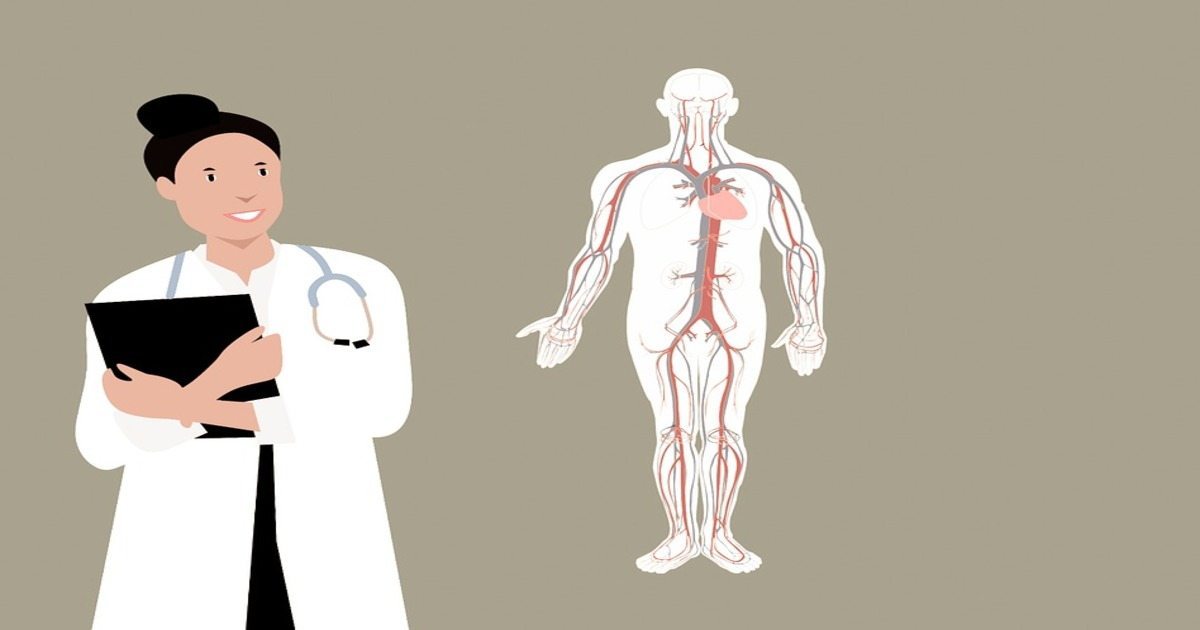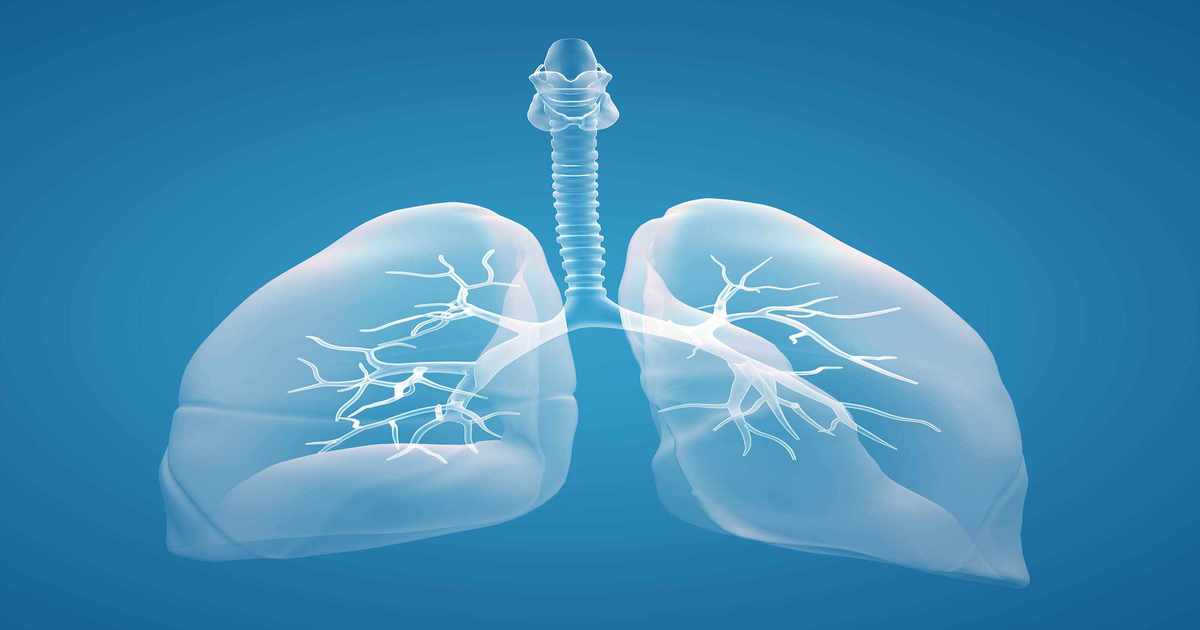Category: Featured News

Mesothelioma Biomarker Could Lead to “Promising” Treatment
Researchers continue to focus on biomarkers as a target to increase the effectiveness of existing treatments for malignant mesothelioma. These genetic characteristics can be used to indicate the progress of mesothelioma, help determine an appropriate treatment, and assess the effectiveness of that treatment. Now, researchers have identified a biomarker that they believe points to poor prognosis in mesothelioma patients, but that could also lead to a promising therapeutic approach for the asbestos-caused cancer.
Researchers from Japan report the urokinase-type plasminogen activator receptor (uPAR), also known as CD87, that is normally expressed throughout the body, including in the colon and kidneys, was found at elevated levels in a mouse model with mesothelioma. The team from Nagoya University Graduate School of Medicine, Nagoya, Japan, found that the higher the level of uPAR, the worse the prognosis was for the mice.
“For the first time, we showed that uPAR overexpression is observed in asbestos-induced rat MM [malignant mesothelioma], regardless of the asbestos fibers used for carcinogenesis and the histological subtype of MM,” wrote the authors. “These data indicate that uPAR overexpression is a common and important expressional alteration in MM.”
The researchers then went on to discover that overexpression of uPAR is also associated with sensitivity to the platinum-based chemotherapy drug cisplatin. When they blocked the level of uPAR in the mice, there was a rise in the sensitivity to cisplatin. On the contrary, higher levels of uPAR “significantly decreased cisplatin sensitivity.”
According to the National Institute of Environmental Health Sciences, marker levels may be measured before treatment to help doctors plan the appropriate therapy. In some types of cancer, the level of a tumor marker reflects the stage (extent) of the disease and/or the patient’s prognosis (likely outcome or course of disease).
http://www.niehs.nih.gov/health/topics/science/biomarkers/
Mesothelioma is an aggressive, terminal cancer found in the lining of the lungs, heart and abdomen in patients previously exposed to asbestos. Although the cancer has been shown to be chemo-resistant, chemotherapy continues to be one of the primary treatment protocols for the disease, with the preferred combination being gemcitabine and cisplatin.
Patients nearly always develop resistance to chemotherapy, leading to metastasis of the cancer. However, studies like this where research is done to identify ways to increase the sensitivity, and thus the effectiveness, of cisplatin, and potentially other existing treatments, can lead to an increase in patient survival.
“In addition to the potential use of uPAR as a prognostic marker, the combination of uPAR abrogation and cisplatin may reveal a promising therapeutic approach for MM,” the researchers concluded.”
See the Sept. 2 issue of Oncotarget for the full report.
http://www.impactjournals.com/oncotarget/index.php?journal=oncotarget&page=article&op=view&path%5B%5D=10430

Researchers Seek to Understand Why Lungs Are Susceptible To Cancer
The body has a cadre of defense mechanisms that work together to fight off illness and diseases. When they fail, however, a person can be left fighting a deadly disease like mesothelioma. Now, researchers believe that the same defense meant to prevent people from having a reaction to breathing in daily environmental exposures could be the same mechanism that allows cancer cells to spread and grow in the lungs.
According to an Aug. 25 press release from the Ohio State University Comprehensive Cancer Center, researchers report that the oxygen breathed in can suppress immune responses to cancer. They found that oxygen-sensing proteins, or PHD cells, limit inflammation by T-cells, the cells in the immune system that kill bacteria and cancer. In the “highly oxygenated lung microenvironment” the PHDs limit the T-cell functions, thus, setting the lung up as a “fertile ground for metastasis.”
“The same ‘normal’ mechanisms put in place to suppress immune responses against harmless material taken into the body during the act of breathing can also suppress immune responses to the colonizing cancer cells that lead to metastatic tumors in the lungs,” said David Clever, PhD, first author of the manuscript and a current medical student at Ohio State. “This creates an immunologically favorable niche – meaning the environment is prime for cancer cells to slip through the immune system’s defenses, thrive and grow in the lungs.”
The American Cancer Society reports that it is cancer metastasis, and not the original cancer diagnosis itself, that is the cause of nearly all cancer deaths. In fact, 90 percent of all cancer deaths are due to metastasis. Lung cancer and mesothelioma can spread to other organs of the body, including spreading to the other lung.
Mesothelioma, an unusual form of cancer caused by breathing in asbestos fibers, can take decades to show symptoms. Mesothelioma treatment follows a similar treatment protocol to lung cancer, so each new discovery related to lung cancer brings hope to the patient community.
The Ohio State team found that by blocking the PHD proteins, they could enhance T-cell responses against cancer and limit metastasis to the lung. Through testing the theory in mice using adoptive cell transfer immunotherapy, or manipulation and re-injection of T-cells, the researchers were hopeful their findings could lead to new therapies.
“Although our finding is in mice, we are eager to test whether disruption of the oxygen sensing machinery in T cells — with drugs, genetics, or regulation of environmental oxygen — will enhance the efficacy of T-cell mediated immune therapies for cancer in humans.”
2,500 to 3,000 people are diagnosed with mesothelioma each year in the U.S. There is no cure for the cancer, however, immunotherapy treatments, available to limited patients, have shown success in extending survival in mesothelioma patients.
The study can be found in the Aug. 25 issue of the journal Cell.
Know more about Mesothelioma and how you can deal with it.

miRNAs Could Be the Key to New, Effective Treatments
Finding a way to stop lung cancer and mesothelioma cells from dividing and growing continues to confound scientists. While many treatments can kill off the cancer cells, there are always some rogue cells that escape death leading to metastasis. Now, researchers report they have discovered a new class of RNA molecules that fuel lung cancer, and targeting them could lead to new, effective treatments for the deadly cancers.
A team of researchers from Singapore report in a July 12 press release they have discovered a new class of microRNAs (miRNAs), called oncomiRs, hidden within cancer stem cells, that drive growth and metastasis of non-small cell lung cancer. The miRNAs, designated as miR-1246 and miR-1290, are “crucial drivers” of tumor growth and progression, the researchers reported.
microRNAs, or miRNAs, are tiny molecules found within cells that serve a function in primary biological processes such as organ development, fat metabolism, cell proliferation and death. When miRNAs function properly, a person remains healthy. However, “disregulation” of miRNAs can lead to diseases, including mesothelioma and other cancers.
The researchers targeted the cancer stem cells, calling them “the major culprits for relapse in lung cancer,” with a new class of therapeutics known as locked nucleic acid (LNA). Using the LNAs they “successfully obliterated human lung tumours grown in mice models.”
MicroRNAs play a large role in the regulation of gene expression and have the potential to serve as biomarkers because they exhibit properties identifiable with specific type of tumors. To that end, the researchers concluded, “these miRNAs [miR-1246 and miR-1290] are clinically useful as biomarkers for tracking disease progression and as therapeutic targets.”
Malignant mesothelioma is a form of cancer that occurs in the thin layer of tissue that surrounds the lungs, abdomen and heart. Asbestos exposure is the only proven cause of mesothelioma. Treatment for the terminal cancer closely follows that of lung cancer. Any breakthrough that leads to a better understanding of the diagnosis, treatment and management of lung cancer brings hope to the mesothelioma community.
Up to 3,000 new cases of mesothelioma are diagnosed in the United States each year. Currently, there is no cure for the disease.
The authors of the study said that the “findings provide fresh insight into understanding therapy resistance in lung cancer and unveil new avenues to monitor and treat the disease more effectively.”
“This will enable scientists and oncologists to improve patient stratification, and to develop therapeutic methods that are targeted, precise, and can reach tumours in the quickest time possible,” said GIS Executive Director Prof Ng Huck Hui.
The team is now collaborating with pharmaceutical companies to develop a drug to be administered to humans.
Results of the study can be found in the June 21 issue of Nature Communications.

Cancer Research Get Boost from Stand Up To Cancer Telecast
Dozens of celebrities came together on stage Sept. 9 for the fifth biennial telecast of StandUp2Cancer (SU2C (http://www.aacr.org/NEWSROOM/PAGES/NEWS-RELEASE-LISTING.ASPX)) and used their star power to raise awareness and funds towards fighting cancer. SU2C’s event was focused on raising money for ground-breaking, collaborative cancer research, while educating the public about the challenges of cancer. The hour-long, commercial free show was broadcast simultaneously across Canada and the U.S. on over 60 channels including the major networks, ABC, CBS, NBC; Fox; USA; VH1; Bravo and HBO.
Stand Up To Cancer Canada (SU2C Canada), a Canadian registered charity, is proud to announce the Hollywood community is once again joining forces to support Stand Up To Cancer's sixth biennial televised fundraising special, the third inclusive of Canada, on Friday, Sept. 7 (8:00 – 9:00 PM ET/PT / 7:00 PM CT). Mahershala Ali, Kathy Bates, Katie Couric, Jennifer Garner, Tony Hale, Marg Helgenberger, Ed Helms, Ken Jeong, Marlee Matlin, Matthew McConaughey, Maria Menounos, Jillian Michaels, Trevor Noah, Dak Prescott, Rob Riggle, Karla Souza, David Spade, Keith Urban, Reese Witherspoon and Canadian Italia Ricci will participate in this memorable event — marking 10 years since the first telecast and 10 years of SU2C's lifesaving research achievements – and four years after the launch of Stand Up To Cancer Canada. Additional stars and performers will be announced in the coming weeks.
“SU2C’s mission, to ensure that all cancer patients become cancer survivors, is one that is very close to my heart,” said the show’s executive producer and Academy Award-nominated actor Bradley Cooper, who lost his father, Charles Cooper, to lung cancer in 2011.
This theme was evident throughout the hour as celebrities who had battled cancer and survived, including Rita Wilson and Kathy Bates, urged viewers to get screened to prevent cancer or to participate in trials if they have already been diagnosed. They also lauded SU2C’s initiative to raise money critically important to fund “Dream Teams” with a goal to end cancer.
“I wouldn’t be standing here tonight if it wasn’t for the progress research has made in recent decades,” said Bates.
SU2C Dream Teams Bring Hope to Cancer Patients
The hour-long telethon presented facts and statistics, research information, and real-life stories that remind us all that cancer is far too prevalent in the United States, but that it can be beaten. SU2C-funded researchers, primarily funded through dream teams, have planned, launched or completed more than 160 clinical trials involving more than 9,000 patients, leading to FDA approval of two treatments, according to SU2C’s Sept. 1 press release (http://www.standup2cancer.org/press_release/view/more_stars_join_su2c_telecast_on_sept._9_will_rally_viewers_by_sharing_publ).
Viewers got a firsthand account from Mitch Carbon, a teen leukemia patient who was out of treatment options and had prepared himself for death until he was accepted into a clinical trial. The immunotherapy clinical trial, at the Children’s Hospital of Philadelphia from the St. Baldrick’s Pediatric Cancer Dream Team, gave him his life back and now he is a freshman in college hoping to enter a field where he can give back to other cancer patients.
100% of the monies raised during the telethon go directly to grants supporting cancer research. Since its first broadcast in 2008, Stand Up to Cancer has raised more than $370 million. The effort has funded 19 dream teams and six translational research teams. The SU2C dream teams “pursue the most promising research, accelerating the discovery of new therapies for cancer patients and/or advancing efforts in cancer prevention research.”
New Dream Team Targets Mutation in Lung Cancer and Mesothelioma Patients
This year, a new dream team focused on KRAS-positive lung cancer, one of the most aggressive subtypes of lung cancer, is being funded through SU2C.
Following is the team’s plan, according to the SU2C website:
“The team has devised a three-pronged approach to create new treatments for patients with KRAS-mutant lung cancers. First, the researchers will identify the most effective therapies for targeting KRAS and other related biological pathways. Second, they will develop approaches to exploit the immune system for the treatment of KRAS-mutant lung cancers. Third, they will integrate targeted therapies with immunotherapies as a novel combined approach to treatment of KRAS-mutant lung cancer.”
Mesothelioma, a rare form of cancer caused by exposure to airborne asbestos fibers, is highly aggressive and is resistant to many current treatments. Care often follows the same protocol as lung cancer. As a result, mesothelioma patients struggling to find effective treatments for the incurable cancer stand to benefit greatly from the amazing results of the SU2C Dream Teams. Continued funding, support and collaboration of these teams bring hope to the millions of Americans who battle cancer each year, as well as the 3,000 Americans diagnosed with mesothelioma each year.
Cancer research is expensive and time-consuming, and for research related to a rare disease, such as mesothelioma, the costs can be even higher. Events such as this not only bring in much-needed funds, but they also raise awareness of the devastation cancer causes to patients and their families.
“We’re at a tipping point in the fight against cancer – the science and technology is there,” said Vice President Joe Biden who appeared on the stage. “We are on the cusp of ending cancer as we know it.”
Visit SU2C to find out more about the initiative.

Oxygen-Focused Treatment May Overcome Drug Resistance in Mesothelioma
Cancer research is often focused on developing cancer treatments that target a specific gene or biomarker responsible for a particular cancer. Now, researchers report that by focusing on tumor oxygen levels and a treatment schedule using a combination of existing anti-cancer treatments survival in lung cancer patients may be improved. Mesothelioma patients, who often follow the same treatment protocol, could also benefit from this approach.
A team of scientists from the University of Minnesota and the University of Southern California realize that low levels of oxygen in cancer can lead to drug resistance and uncontrollable tumor growth in many cancers. The condition, known as hypoxia, is treated with hypoxia-activated prodrugs, or HAPs. HAPs can penetrate into the oxygen-starved areas of tumors that other cancer drugs cannot. But, HAPs are not effective as a single treatment, so the researchers turned their attention to finding a way to increase the success of them.
The researchers developed a mathematical model to assess the effectiveness of using a HAP (evofosfamide) in combination with standard cancer therapy to prevent the resistance to erlotinib in EGFR-positive non-small cell lung cancer (NSCLC). EGFR is a protein found on the surface of some cells which causes the cells to divide and spread. It is found at abnormally high levels on the surface of lung cancer and mesothelioma. The researchers report that nearly all EGFR NSCLC patients will develop a resistance to erlotinib within a year, making the drug ineffective.
Erlotinib is in a class of drugs called kinase inhibitors that is used to treat NSCLC that has metastasized in patients previously treated with at least one other chemotherapy medication and have not gotten better.
After testing a multitude of treatment schedules combined with differing dosages, the team found that ultimately the best combination to prevent resistance to erlotinib was achieved by alternating the treatment of evofosfamide and erlotinib while limiting the down time between the dosages. By alternating between the two drugs, the researchers report, “the entire population of cancer cells in the tumor microenvironment” is constantly controlled by the drugs.”
“Alternating between these two drugs allows each one to provide the necessary control over the cancer cell population the other one is lacking,” the authors wrote in the study. “These results demonstrate that incorporating HAPs in combination with targeted therapies may be an effective tool in preventing resistance, and suggest an alternative use for HAPs.”
Nearly 3,000 Americans are diagnosed with the incurable cancer, mesothelioma, each year. While recent advances in treatment for mesothelioma patients have improved survival for some patients, continued research is critically important to ensure existing treatments become even more effective. Each breakthrough or promising result from a study increases hope that mesothelioma patients can live longer, higher quality lives with the disease.
“These findings highlight the importance of designing combination therapies with drugs whose strengths complement each other in order to maximize the therapeutic benefits,” concluded the authors.
The study can be found in the Aug. 25 issue of PLOS Computational Biology.
Photo Credit: RxList.com
Free Mesothelioma Patient & Treatment Guide
We’d like to offer you our in-depth guide, “A Patient’s Guide to Mesothelioma,” absolutely free of charge.
It contains a wealth of information and resources to help you better understand the condition, choose (and afford) appropriate treatment, and exercise your legal right to compensation.
Download Now